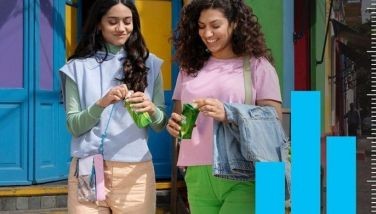On a chocolate high
MANILA, Philippines - There are many things that we enjoy but take for granted because of their ubiquity. But sometimes, a different version of the familiar comes along, and we start seeing it in a new light.
Take the lechon, for instance. Most people are used to slathering the meat with the awesome sarsa (sauce made out of chopped liver and seasonings). It’s simply not lechon without it. In Cebu, however, lechon is made in such a way that the spices seep through the meat and the flavors are locked in. With every bite, you can savor all the herby goodness without any need for condiments or relishes.
In the case of Philippine mangoes, many rate it as the best there is. Yet it’s challenging to share their deliciousness: moving those delicate fruits around might just bruise or render them into a pulp. Then came dried mangoes, and things were never the same again. Balikbayans and tourists can bring these freeze-dried and vacuum-sealed versions of fresh mangoes as pasalubong – especially those from Cebu – or simply as a tasty souvenir from a far-away destination.
As if this wasn’t enough, there’s even a new twist: dried mangoes dipped in chocolate. The sweet-and-sour combination seems irresistible, as a growing number of people have become addicted to this new delicacy.
But what about the tablea, a chocolate drink made from locally sourced ground cacao pods? Tablea may be popular, but it has a grainy texture, unlike the smooth creaminess of imported chocolate. Because of these qualities, tablea is commonly regarded as “dirty chocolate†and gets no respect.
Enter Ralfe’s Gourmet Chocolate.
Ralfe has a wide variety of sweet products, including alfajores, ganache, truffles, cookies, rice crispies, chocolate sticks, peanut butter, and tablea singles. The quick-melt chocolate discs are a crowd favorite: just drop it into a tumbler of hot water or milk and presto! You get a frothy, silky drink. Just remember to shake but not stir to get the right consistency and taste.
Indeed, Ralfe products are gaining attention not just from foodies, but also from prestigious hotels and establishments, mostly in Cebu.
So what’s the secret to Ralfe’s tablea? It’s all in the process.
In most cottage industries, farmers harvest cacao pods. The beans chosen for roasting are encased in a pulpy substance or mucilage. Farmers literally suck on the beans to take out mucilage. But this method, which sounds rather messy, also deprives the beans of their robust flavor.
Using this technique also leads to a smaller yield. Only around a third of the weight of a cacao pod can be used to produce commercially viable chocolate. To make up for this, “fillers†such as peanuts, sweet potato, jackfruit seeds, or cacao pod husks are added. And because these fillers don’t dissolve, they result in a gritty consistency that tablea or sikwate is known for.
Ralfe, on the other hand, uses 100 percent cacao beans. It puts the selected ones through a fermentation process, allowing the mucilage to be segregated in a cleaner manner. These are then roasted to perfection with controlled heat for a specific amount of time. This right mix of temperature and time is crucial in determining the smell and taste of Ralfe’s chocolates.
Shelling is best done mano-mano or by hand. This is followed by pounding and grinding, which then produces the cocoa liquor or cocoa mass. Often called unsweetened chocolate, these are shaped into “plumps.†Using banana leaves, the plumps go though a curing process.
Raquel learned her art and craft from her Lola Guaning. They would make hot chocolate using a batirol, or a small, urn-shaped pot. This is partnered with a stirrer with a handle designed to be rotated between the palms of one’s hands.
Life with her grandmother in Balamban, Cebu, was full of love, but it was also a time of great difficulty. To attend classes, Raquel had to cross seven streams just to reach school. She also sold candles and sampaguita garlands to help make ends meet.
It is this same steady determination that enabled Raquel to seize an opportunity when she saw one.
In 2009, she was helping plan a menu for an event for a mining firm in Toledo City in Cebu. Through this work, she met and became friends with an Argentinian lady whose husband was an executive with the company.
The two dynamic women got to talking about business and what their countries have to offer. For Argentina, its olive oil is considered among the best in the world. When it was Raquel’s turn to explain what the Philippines can showcase, she thought of dried mangoes. But then she came up with something better: tablea. It was all she needed to get things started.
In 2010, using a start-up capital of P10,000, Raquel purchased around a hundred kilos of cacao beans. It was a struggling venture at first, as boxes and boxes of unsold chocolate piled up in their house. But her perseverance paid off: Today, Ralfe uses around a thousand kilos of cacao beans per month and manufactures over 5,000 different kinds of chocolate.
Ralfe chocolates are all natural – no preservatives and additives at all. The shelf life of its chocolate is six months, while pure tablea lasts for one year. All products have certification from the Food and Drug Administration (FDA).
The brand “Ralfe†is derived from the names of the people behind it. Raquel, who handles product development, is also the founder and president. Her husband, Alfred, is a mechanical engineer by profession. He is the finance boss and is in charge of the company’s made-to-order machines and equipment. Their good family friend Edu Patino is a jack-of-all-trades: cacao technician, marketing head, and sales leader.
With its success, Ralfe Gourmet now has a 10-hectare cacao farm in Balamban. A hectare can yield a ton of chocolate.
But the heart of its operations is still Raquel and Alfred’s home, which doubles as their office and showroom. It is simply a shrine to a lifelong affair with chocolate. From the walls to the décor, any visitor will immediately know that a chocoholic lives there. Together with their eight children, whose ages range from 7 to 22, they are truly living the dream. And all because Raquel had the imagination and drive to transform the overlooked tablea.
Ralfe’s Gourmet Chocolate is available at Cafe Marco at the Marco Polo Plaza Cebu. Visit their website www.ralfegourmet.com or email [email protected].
- Latest
- Trending













